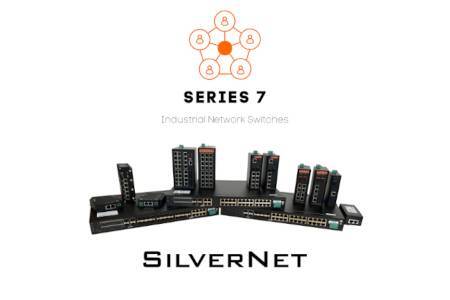Photo: Todd Rockoff, Executive Director of the HDcctv Alliance and Tim Shen (left) and Tim Shen, Overseas Marking Director of Dahua (right)
SecurityNewsDesk recently reported that ZheJiang Dahua Technology Company had opened up its patented HDCVI technology to the global video surveillance industry. To find out more about HDCVI, the basis for the HDcctv AT 2.0 standard, and why Dahua decided to open it up through the HDcctv Alliance Intellectual Property Agreement, we spoke to Tim Shen, Overseas Marking Director of Dahua and Todd Rockoff, Executive Director of the HDcctv Alliance.
Rockoff explained that Dahua had developed HDCVI on its own and has joined the Alliance with the goal of transitioning that technology from a proprietary technology to being an open, global standard. The HDcctv Alliance is all about specialised solutions for HD surveillance local site transport, said Rockoff, and Shen explained why the Alliance provided the ideal platform for opening up this new standard.
“Looking at the industry today we believe that no one technology can survive if it is not open,” he said. “That’s the key reason we wanted to co-operate with the Alliance, to push HDCVI to become a global standard with AT 2.0. AT 2.0 allows manufacturing partners to enjoy the technology and by sharing the open technology people can use products from different brands, enabling a true plug and play solution.”
Shen is very clear on how this move will benefit the Alliance’s members as well as the industry as a whole. He told SecurityNewsDesk that not only would users enjoy the technology itself, it would provide solutions that were truly in demand in the market.
“By sharing an open technology standard like this we believe that one of the main benefits that will be enjoyed by manufacturers is the ability to deliver what the market really wants and is demanding,” he explained. “In addition, the standard will pave the way for maximum market growth by providing plug and play solutions that everyone can benefit from.”
So what inspired Dahua to venture into HDCVI in the first place?
“To be frank, the reason we decided to develop HDCVI is because we see the industry moving from standard definition to high definition, and in the market there are only a few HD solutions, such as IP,” said Shen. “It has been difficult, historically, to encourage people to be more accepting of these solutions, and as the greater share of the market is still analogue we felt it would be best to explore an analogue solution.”
Given this view of the market, Shen went on to add that Dahua knew very early on that HDCVI must be an open standard – not just to benefit the market, but Dahua itself.
He said, “From our internal survey of the market it was clear that the majority of sales in the market each year were analogue, and that it is a very big market. So by making HDCVI an open, global standard we are also helping make Dahua’s reach in the market larger. Even if we do have less than 100%, we will still have a big share of this large market.”
Rockoff and Shen emphasised how important a development this is in the surveillance industry. Dahua has already seen a very quick acceptance of their HDCVI solution since its launch in September 2013. Both illustrated that one of the main selling points of HDCVI is the fact that it’s not doing anything to change the way the industry operates, it’s simply improving it. Using this standard enables users to make the most of their existing analogue systems with upgraded front and back-end devices to enhance the standard definition to high definition – truly plug and play.
Dahua takes this ease of use and the open nature of HDCVI very seriously, so not only is the standard now open to the whole industry, open integration is at the core of the whole solution. Shen said, “It integrates with everything. We also wanted the solution to be able to integrate with other signals, like IP, traditional analogue and networking signals, that’s why we also have new back-end devices. Our ‘tribrid’ DVR allows users to individually input signals, including IP and analogue. So it’s truly open technology with open products for the next generation of the security industry.”
As well as putting a great deal of effort into the interoperability of its HDCVI solutions, Dahua has invested time into developing a roadmap for the future. Shen said, “We are dedicated to making HDCVI the global standard and we have a long roadmap for the solution, going from AT 2.0 to AT 3.0 for the next generation. In a few years AT 3.0 will incorporate enhancements for 2k to 4k and much, much more.”
Rockoff is delighted that the relationship between the Alliance and Dahua has advanced to this point, and is sure that this latest development will have a very positive effect on the surveillance market.
“The relationship between the HDcctv Alliance and Dahua is not new,” he said. “I had the pleasure of meeting Zhu Jiangming, Dahua Executive Vice President and principal inventor of the seminal HDCVI patents, and Henry Zhang, Dahua’s Vice President of R&D who also now sits on the HDcctv Alliance board, a few years ago, and it was a complete meeting of minds. Dahua’s goals are completely in line with those of the Alliance.
“The technology is fantastic, but if it’s attributable only to one company it will not survive, it’s all about interoperability for everyone – and Dahua understands that. This new development is not the start of a new relationship; it’s the strengthening of an existing, like-minded one. Will AT 3.0 take over the world? Nobody knows. The results will depend on how the industry segments and comes together around various standards. However, if support continues to grow for AT and technical solutions for 3.0 like 4k then AT will be a very strong contender in the future.”










